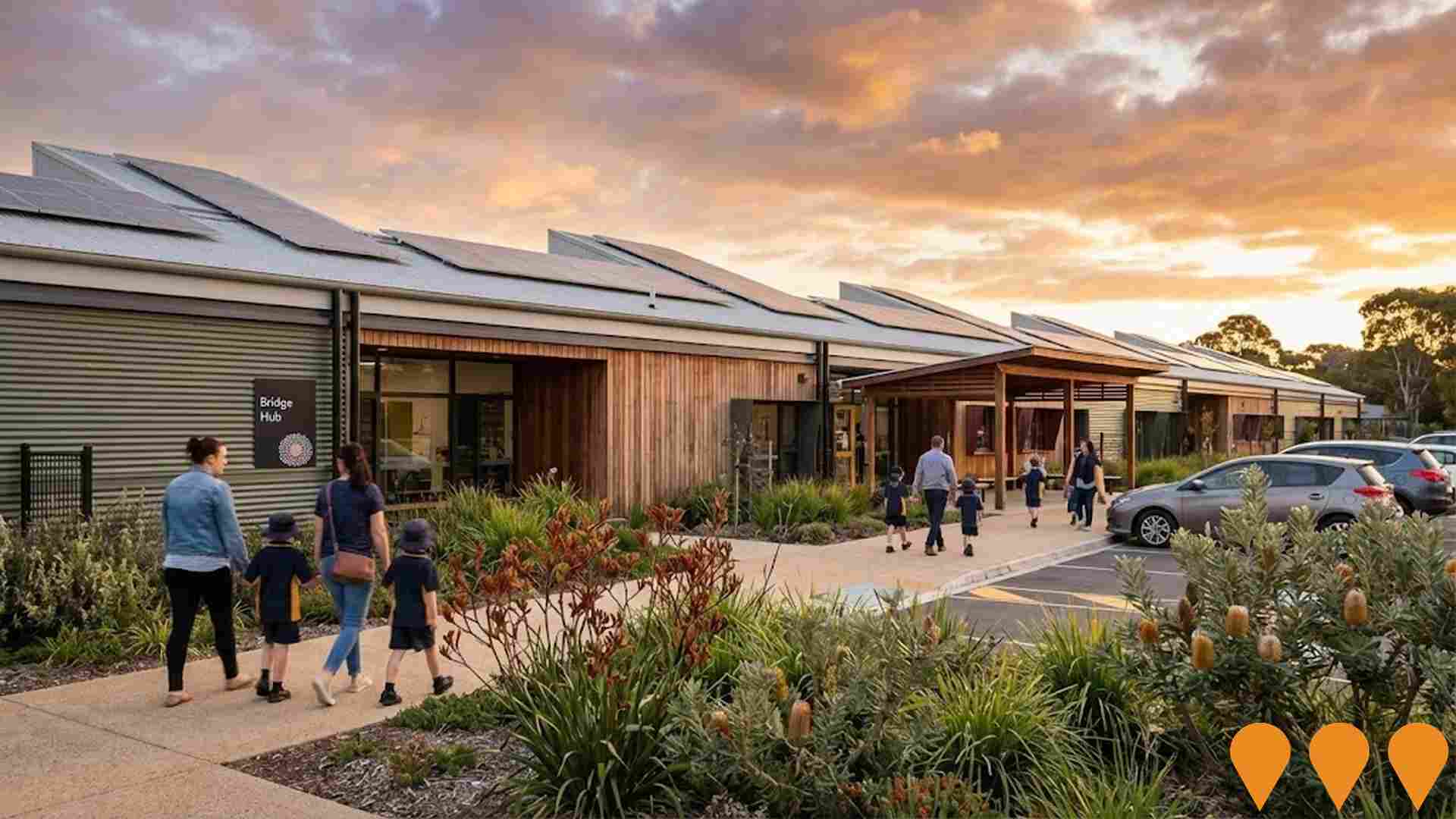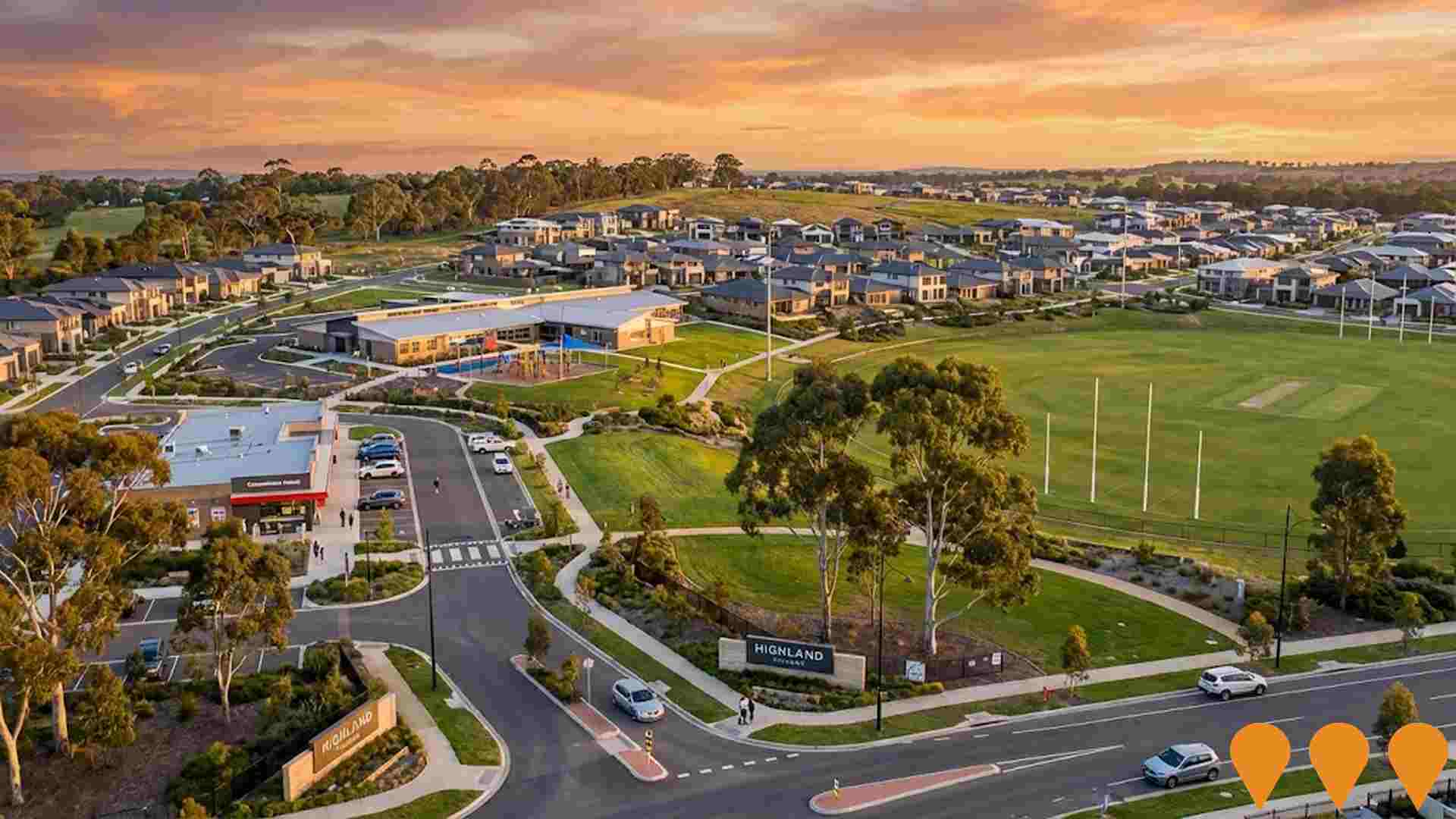Chart Color Schemes
est. as @ -- *
ABS ERP | -- people | --
2021 Census | -- people
Sales Activity
Curious about local property values? Filter the chart to assess the volume and appreciation (including resales) trends and regional comparisons, or scroll to the map below view this information at an individual property level.
Find a Recent Sale
Sales Detail
Population
Rockbank - Mount Cottrell lies within the top 10% of areas nationally in terms of population growth performance according to AreaSearch analysis of short and medium-term trends
Rockbank - Mount Cottrell's population is approximately 37,418 as of Aug 2025. This represents a growth of 19,865 people since the 2021 Census, which reported a population of 17,553 people. The increase is inferred from ABS estimates of June 2024 and validated new addresses since then. The population density is around 297 persons per square kilometer. The area's growth of 113.2% since the 2021 Census exceeds national (8.6%) and state averages, making it a regional growth leader. Interstate migration contributed approximately 84.8% to this growth.
AreaSearch uses ABS/Geoscience Australia projections for each SA2 area, released in 2024 with a base year of 2022. For areas not covered by these projections, VIC State Government's Regional/LGA projections from 2023 are used after adjustments employing weighted aggregation methods. Growth rates by age group are applied across all areas for years 2032 to 2041. Based on latest population numbers, the area is projected to grow by 59,698 persons to 2041, recording a total gain of 143.4% over these 17 years.
Frequently Asked Questions - Population
Development
The level of residential development activity in Rockbank - Mount Cottrell was found to be higher than 90% of real estate markets across the country
Rockbank - Mount Cottrell has seen approximately 1,916 new homes approved annually. Over the past five financial years, from FY21 to FY25, around 9,584 homes were approved, with an additional 482 approved so far in FY26. On average, about 2.2 people have moved to the area per new home constructed over these years, indicating strong demand that supports property values.
The average construction cost of new homes is $373,000, which is below the regional average, suggesting more affordable housing options for buyers. This financial year has seen $587.2 million in commercial approvals, reflecting robust commercial development momentum. Compared to Greater Melbourne, Rockbank - Mount Cottrell records 373.0% more development activity per capita, offering ample choice for buyers despite recent moderation in activity levels. This high level of development activity is significantly higher than the national average, indicating strong developer confidence in the location. New developments consist predominantly of detached dwellings (90.0%) with a smaller proportion of attached dwellings (10.0%), maintaining the area's traditional low-density character focused on family homes.
With around 18 people per approval, Rockbank - Mount Cottrell reflects an actively developing area. Looking ahead to 2041, Rockbank - Mount Cottrell is projected to grow by approximately 53,669 residents. Based on current development patterns, new housing supply should readily meet demand, providing good conditions for buyers and potentially facilitating population growth beyond current projections.
Frequently Asked Questions - Development
Infrastructure
Rockbank - Mount Cottrell has strong levels of nearby infrastructure activity, ranking in the top 40% nationally
Changes to local infrastructure significantly influence an area's performance. AreaSearch has identified 170 projects likely impacting the area. Notable projects are Melton Line Upgrade, Thornhill Park, Woodlea Estate, and Woodlea Estate. The following details projects likely most relevant.
Professional plan users can use the search below to filter and access additional projects.
INFRASTRUCTURE SEARCH
 Denotes AI-based impression for illustrative purposes only, not to be taken as definitive under any circumstances. Please follow links and conduct other investigations from the project's source for actual imagery. Developers and project owners wishing us to use original imagery please Contact Us and we will do so.
Denotes AI-based impression for illustrative purposes only, not to be taken as definitive under any circumstances. Please follow links and conduct other investigations from the project's source for actual imagery. Developers and project owners wishing us to use original imagery please Contact Us and we will do so.
Frequently Asked Questions - Infrastructure
Melton Line Upgrade
The $650 million Melton Line Upgrade, jointly funded by the Australian and Victorian Governments, is preparing the rail corridor for future electrification to Melton. The project includes: extending platforms at Deer Park, Caroline Springs, Rockbank, and Cobblebank to accommodate longer nine-car VLocity trains, which will boost passenger capacity by 50% from 2027; building a new four-platform Melton Station (opening 2026 as part of the Melton level crossing removals); and constructing a new future-proofed train stabling yard at Cobblebank. Early works are underway, with major construction starting in early 2026. The contract has been awarded to a consortium including John Holland and KBR. This project is a precursor to the full Melton Electrification.

Stockland Mt Atkinson
Large-scale masterplanned community by Stockland delivering over 5,000 homes across 315 hectares in Melbourne's west. Includes a future town centre (construction commencing 2025, opening 2027), two government schools, multiple parks, sports reserves and community facilities. Forms part of the broader 1,000+ hectare Mt Atkinson Precinct with Melbourne Business Park expected to create 18,000 jobs.
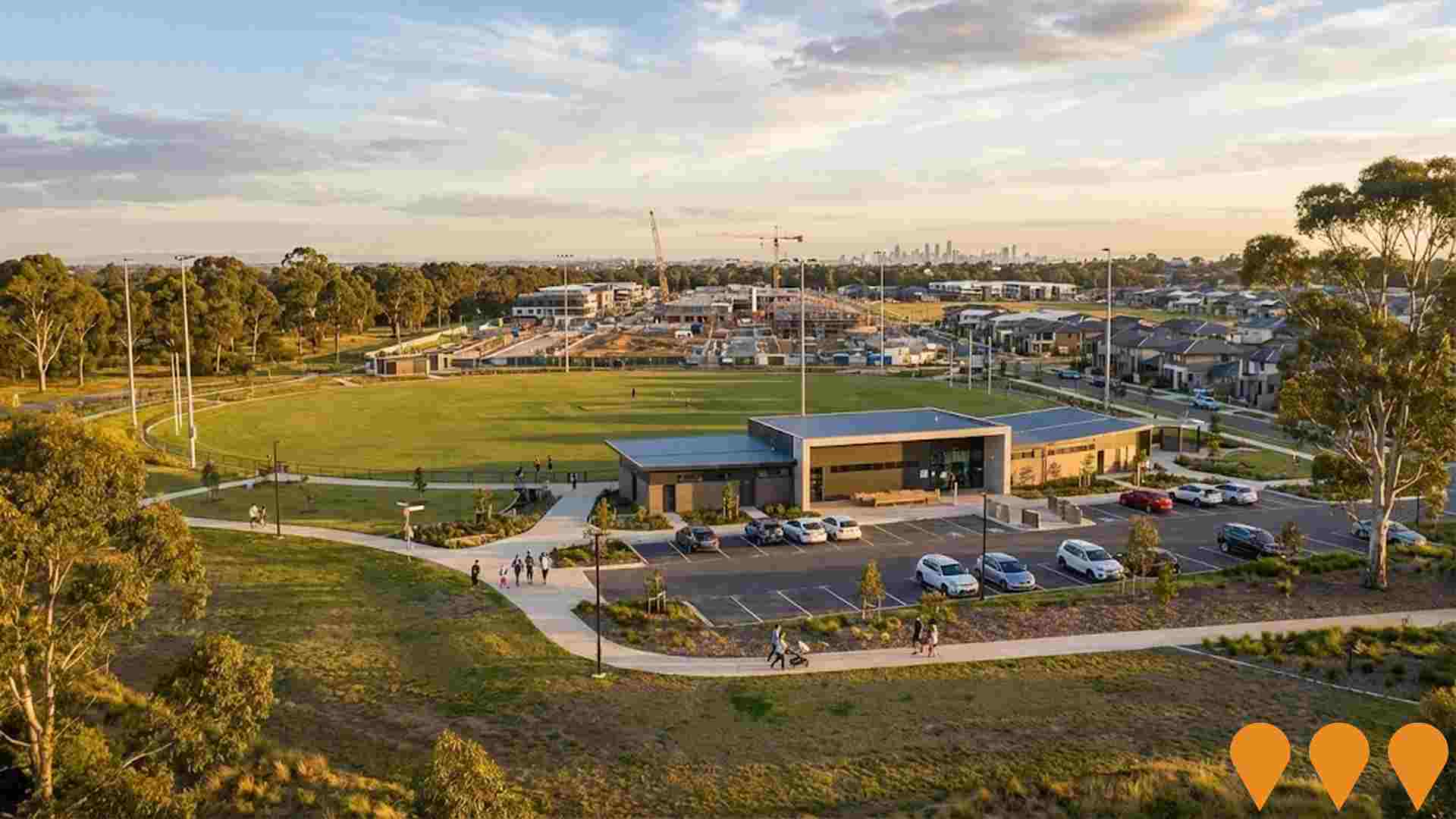
Thornhill Park
Large-scale masterplanned residential community by Resi Ventures (formerly Wel.Co) delivering approximately 2,800 homes across 20+ stages. Features include a future town centre (Central Square), two government primary schools (one now open), sporting reserves, extensive linear parklands, wetlands and display village. Multiple stages are currently under construction or titling.

Woodlea Estate
Woodlea is a 711 hectare masterplanned residential community in Aintree and Bonnie Brook in Melbourne's western growth corridor. The project is being delivered as a joint venture between Mirvac and Victoria Investments and Properties (VIP) and will ultimately deliver around 7,000 homes together with a major and local town centre, schools, childcare, community facilities, large areas of open space and sporting fields. The community already includes the HomeCo Woodlea Town Centre with Coles and specialty retail, multiple schools and an emerging active open space and skate park precinct. Construction is progressing in stages, with more than 14,000 residents now living in the estate and substantial completion expected between 2030 and 2035.
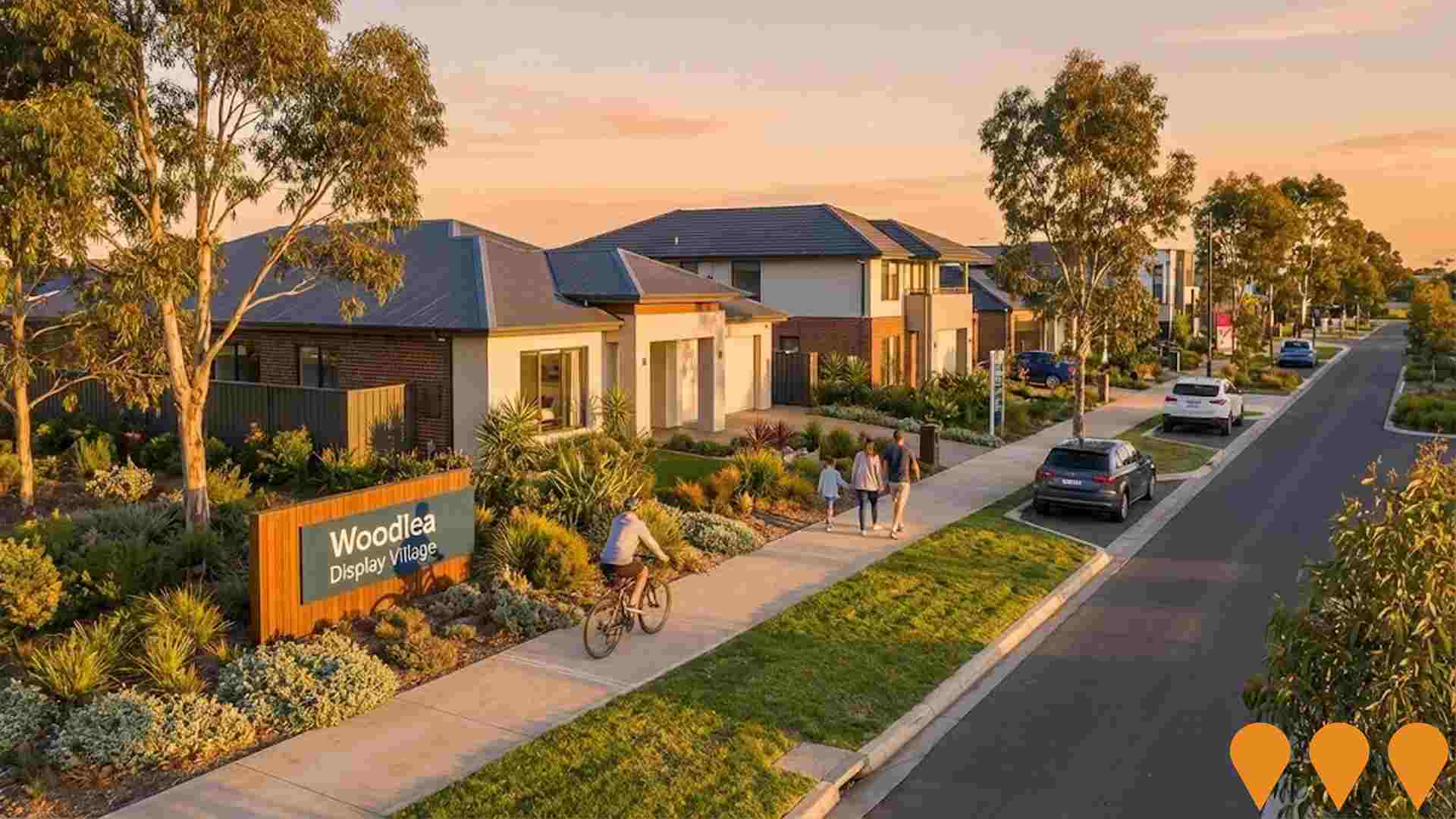
Bridgefield Estate
Bridgefield is a completed 91 hectare masterplanned residential community in Rockbank in Melbourne's western growth corridor. The 1002 lot estate will be home to around 3,000 residents and features landscaped parks and wetlands, a private residents club with pool, gym and tennis courts, and convenient access to Rockbank train station, future schools and a planned local activity centre and town centre.
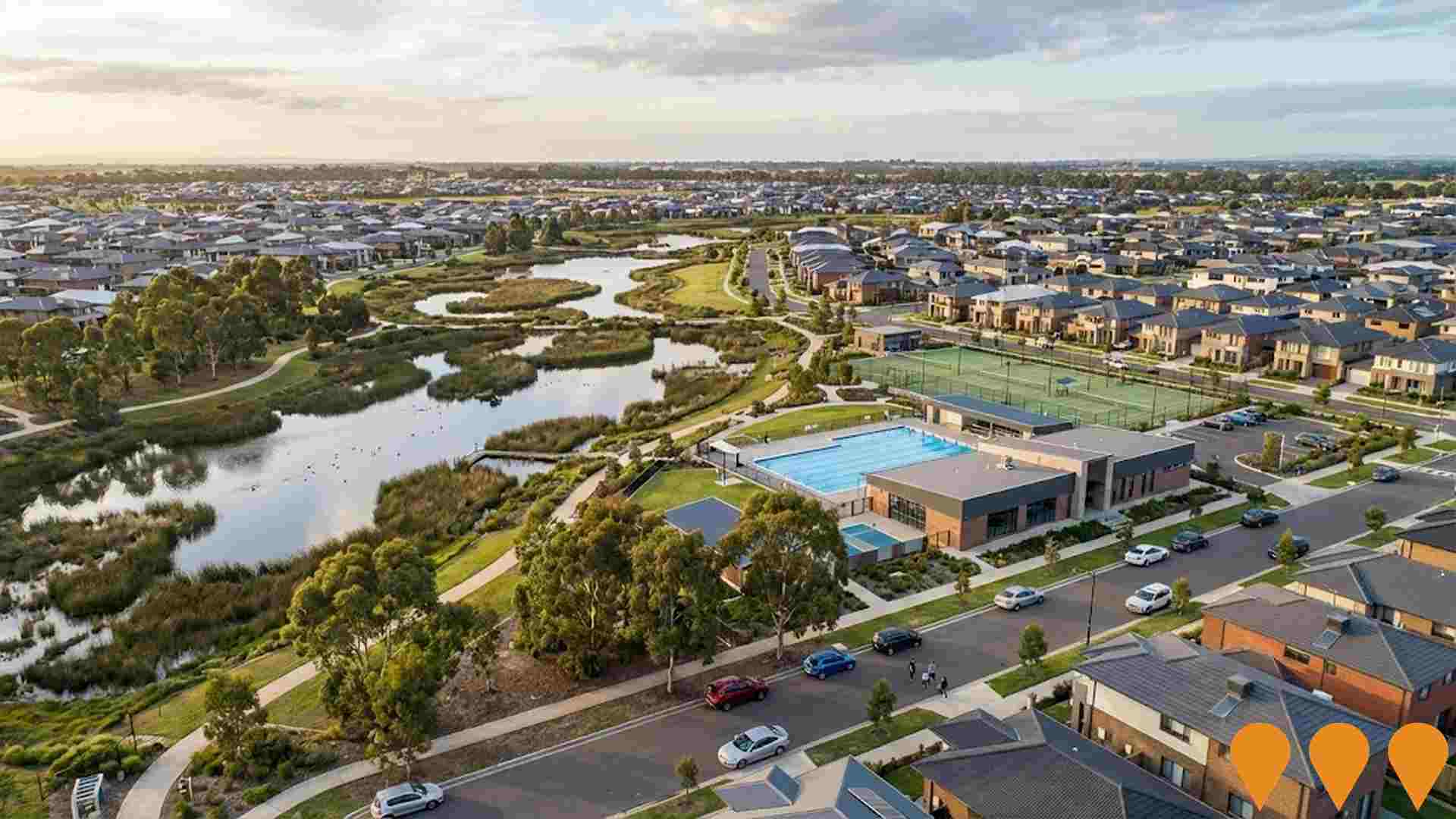
Kororoit Part 2 Precinct Structure Plan
Major residential and environmental precinct planning for urban development integrated with the 215-hectare Kororoit Creek Regional Park. The project excludes the approved regional park area and focuses on sustainable urban development around conservation areas with habitat for growling grass frogs and native grasslands. Project commenced planning phase in mid-2022 with recent landowner engagement activities in early 2025.

Woodlea Estate
Woodlea is a 711 hectare greenfield masterplanned house and land community located about 29km west of Melbourne CBD in Aintree, Bonnie Brook and Rockbank within the City of Melton. The project is being delivered by Mirvac and Victoria Investments Properties and will ultimately provide around 7,000 residential lots plus townhouses, a town centre, schools, parks and community facilities for roughly 20,000 residents, with more than 14,000 to 16,000 people already living in the estate and a new display village, sales and experience centre and active open space precinct completed or underway. Staged construction and lot settlements are planned to continue through to around FY32, with the Local Town Centre open since 2021 and further community, retail and sporting infrastructure rolling out as the remaining neighbourhoods are delivered. :contentReference[oaicite:0]{index=0}:contentReference[oaicite:1]{index=1}:contentReference[oaicite:2]{index=2}

Plumpton Aquatic and Leisure Centre
The Plumpton Aquatic and Leisure Centre is a two-storey all-electric aquatic and leisure facility in Fraser Rise, featuring a 50m 8-lane competition pool, indoor splash play areas, water slides, spas, sauna, Australia's first sensory aquatic space, health and fitness areas, allied health spaces, an outdoor interactive water play area with beach-style access, change facilities, caf‚, meeting/function spaces, and a rooftop deck. Designed for 5-star Green Star accreditation with a focus on wellbeing, accessibility, and inclusion. Construction commenced in November 2025, with opening anticipated in 2028.
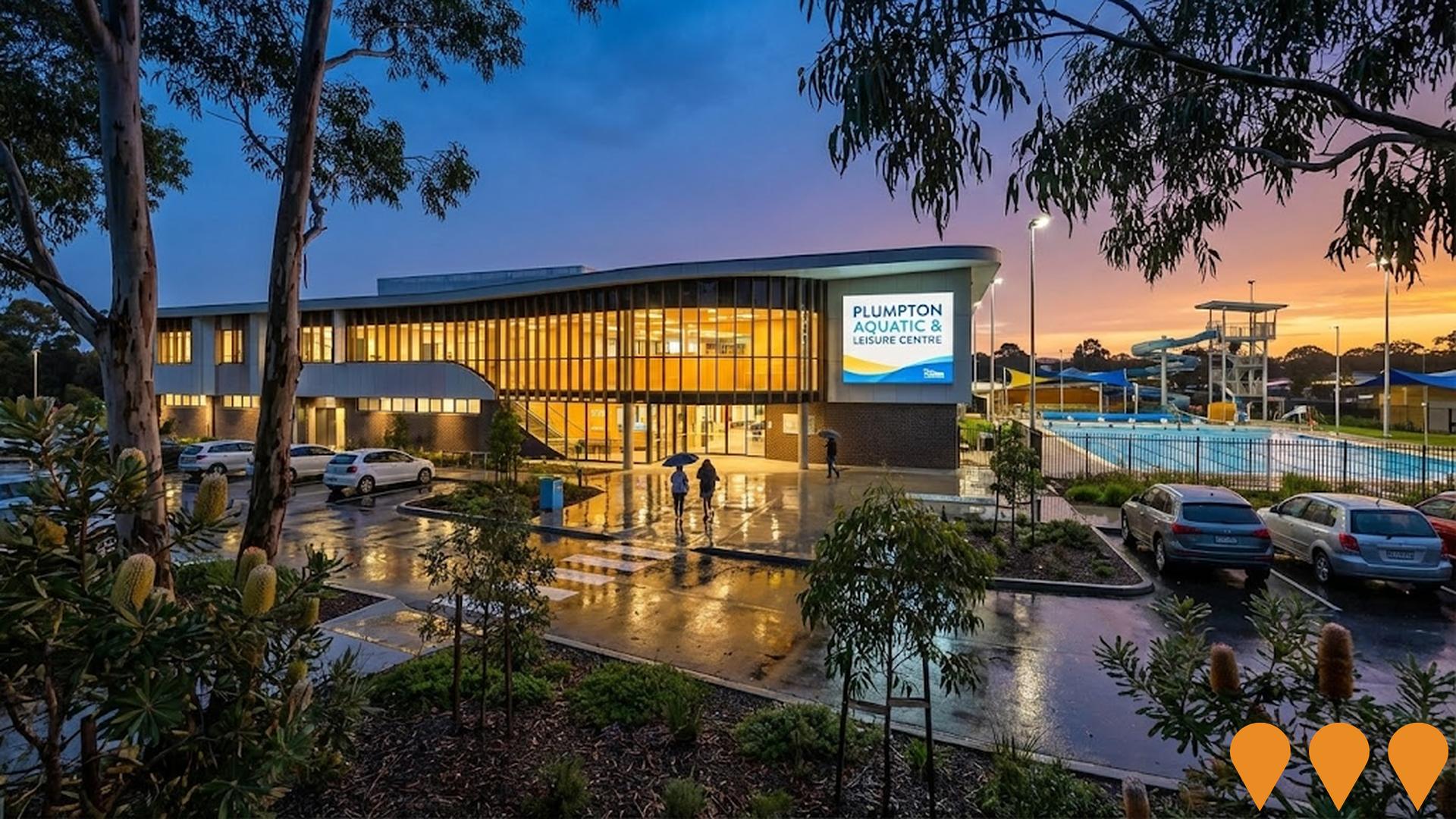
Employment
Employment conditions in Rockbank - Mount Cottrell remain below the national average according to AreaSearch analysis
Rockbank - Mount Cottrell has an educated workforce with diverse sector representation. The unemployment rate was 5.0% as of June 2025.
Employment growth over the past year was estimated at 4.3%. There were 13,559 residents in work while the unemployment rate was 0.4% above Greater Melbourne's rate of 4.6%. Workforce participation was somewhat below standard at 60.4%, compared to Greater Melbourne's 64.1%. Employment is concentrated in health care & social assistance, transport, postal & warehousing, and construction.
The area has a particular employment specialization in transport, postal & warehousing, with an employment share of 2.5 times the regional level. Professional & technical services are under-represented, with only 6.7% of Rockbank - Mount Cottrell's workforce compared to 10.1% in Greater Melbourne. The ratio of workers per resident indicates a level of local employment opportunities above the norm. Between June 2024 and June 2025, employment increased by 4.3%, while labour force increased by 5.8%, resulting in an unemployment rise of 1.3 percentage points. Greater Melbourne recorded employment growth of 3.5% during this period. Jobs and Skills Australia's national employment forecasts from May 2025 suggest that Rockbank - Mount Cottrell's employment could grow approximately 6.6%% over five years and 13.6% over ten years, based on simple weighting extrapolations for illustrative purposes.
Frequently Asked Questions - Employment
Income
Income analysis reveals strong economic positioning, with the area outperforming 60% of locations assessed nationally by AreaSearch
AreaSearch's latest postcode level ATO data for financial year 2022 shows that Rockbank - Mount Cottrell has lower income compared to the national average. The median assessed income is $54,315 while the average income stands at $61,820. In contrast, Greater Melbourne has a median income of $54,892 and an average income of $73,761. Based on Wage Price Index growth of 12.16% since financial year 2022, current estimates for Rockbank - Mount Cottrell would be approximately $60,920 (median) and $69,337 (average) as of September 2025. According to the 2021 Census, incomes in Rockbank - Mount Cottrell cluster around the 73rd percentile nationally. The earnings profile shows that 46.4% of locals fall into the $1,500 - 2,999 income category, which is also prominent in the region with 32.8%. High housing costs consume 19.1% of income, but strong earnings place disposable income at the 68th percentile nationally. The area's SEIFA income ranking places it in the fifth decile.
Frequently Asked Questions - Income
Housing
Rockbank - Mount Cottrell is characterized by a predominantly suburban housing profile, with a higher proportion of rental properties than the broader region
Rockbank-Mount Cottrell had 96.3% houses and 3.8% other dwellings in the latest Census, compared to Melbourne metro's 90.9% houses and 9.1% other dwellings. Home ownership was at 9.2%, with 66.3% mortgaged and 24.5% rented. The median monthly mortgage repayment was $2,017, higher than Melbourne metro's $1,800. Median weekly rent was $400, compared to Melbourne metro's $351. Nationally, Rockbank-Mount Cottrell's mortgage repayments were higher at $2,017 versus the Australian average of $1,863, and rents exceeded the national figure of $375 at $400.
Frequently Asked Questions - Housing
Household Composition
Rockbank - Mount Cottrell features high concentrations of family households, with a higher-than-average median household size
Family households constitute 84.3% of all households, including 53.5% couples with children, 20.8% couples without children, and 8.9% single parent families. Non-family households comprise the remaining 15.7%, with lone person households at 13.6% and group households making up 2.1%. The median household size is 3.2 people, larger than the Greater Melbourne average of 3.0.
Frequently Asked Questions - Households
Local Schools & Education
The educational profile of Rockbank - Mount Cottrell exceeds national averages, with above-average qualification levels and academic performance metrics
Educational attainment in Rockbank - Mount Cottrell is significantly higher than broader benchmarks. 34.7% of residents aged 15+ hold university qualifications, compared to 24.3% in the SA3 area. Bachelor degrees are the most common at 22.4%, followed by postgraduate qualifications (9.9%) and graduate diplomas (2.4%). Vocational credentials are also prominent, with 27.9% of residents aged 15+ holding such qualifications - advanced diplomas at 12.6% and certificates at 15.3%.
Educational participation is high, with 42.1% of residents currently enrolled in formal education. This includes 16.6% in primary education, 7.4% in secondary education, and 5.8% pursuing tertiary education. There are 7 schools operating within Rockbank - Mount Cottrell, educating approximately 2,473 students. The area has typical Australian school conditions (ICSEA: 1031) with balanced educational opportunities, including 4 primary, 1 secondary, and 2 K-12 schools. Local school capacity is limited at 6.6 places per 100 residents compared to the regional average of 16.3, leading many families to travel for schooling. Note: where schools show 'n/a' for enrolments, please refer to the parent campus.
Frequently Asked Questions - Education
Schools Detail
Nearby Services & Amenities
Transport
Transport servicing is moderate compared to other areas nationally based on assessment of service frequency, route connectivity and accessibility
Rockbank - Mount Cottrell has 43 active public transport stops. These are a mix of train and bus stations. They are served by 18 different routes.
Together, these routes provide 7,007 weekly passenger trips. The accessibility to these transport services is limited. Residents typically live 1034 meters from the nearest stop. On average, there are 1,001 trips per day across all routes. This equates to around 162 weekly trips per individual stop.
Frequently Asked Questions - Transport
Transport Stops Detail
Health
Rockbank - Mount Cottrell's residents boast exceedingly positive health performance metrics with very low prevalence of common health conditions across all age groups
Rockbank - Mount Cottrell shows excellent health outcomes with a very low prevalence of common health conditions across all ages.
Approximately 51% (~18,933 people) have private health cover, which is relatively low. The most prevalent medical conditions are asthma and mental health issues, affecting 6.0 and 4.0% of residents respectively. A total of 84.6% declare no medical ailments compared to Greater Melbourne's 73.7%. Only 3.6% (1,365 people) are aged 65 and over, lower than Greater Melbourne's 10.1%. However, seniors' health outcomes require more attention despite being strong.
Frequently Asked Questions - Health
Cultural Diversity
Rockbank - Mount Cottrell is among the most culturally diverse areas in the country based on AreaSearch assessment of a range of language and cultural background related metrics
Rockbank - Mount Cottrell has a population where 48.1% were born overseas, with 62.6% speaking a language other than English at home. Christianity is the predominant religion, comprising 39.5%. The proportion of people identifying as 'Other' religion is significantly higher at 17.4%, compared to Greater Melbourne's average of 5.6%.
In terms of ancestry, 'Other' is the largest group at 31.5%, substantially higher than the regional average of 18.2%. Indian ancestry is also notably high at 15.9%, surpassing the regional average of 5.9%. Australian ancestry is relatively lower at 10.6%, compared to the regional average of 18.6%. There are notable disparities in representation for certain ethnic groups: Filipino (6.4% vs regional average of 3.4%), Maltese (4.2% vs 5.1%), and Samoan (1.2% vs 1.0%).
Frequently Asked Questions - Diversity
Age
Rockbank - Mount Cottrell hosts a very young demographic, ranking in the bottom 10% of areas nationwide
Rockbank - Mount Cottrell's median age is 31 years, which is lower than the Greater Melbourne average of 37 and significantly below the Australian median of 38. Compared to Greater Melbourne, Rockbank - Mount Cottrell has a higher proportion of residents aged 35-44 (25.1%) but fewer residents aged 55-64 (4.6%). This concentration of residents aged 35-44 is significantly higher than the national average of 14.2%. Between 2021 and the present, the proportion of residents aged 5-14 has increased from 13.8% to 17.4%, while the proportion of residents aged 35-44 has risen from 21.9% to 25.1%. Conversely, the proportion of residents aged 25-34 has decreased from 26.4% to 20.8%, and the proportion of residents aged 0-4 has dropped from 10.8% to 9.6%. Demographic modeling projects significant changes in Rockbank - Mount Cottrell's age profile by 2041, with the 35-44 age cohort projected to expand substantially, increasing by 12,262 people (131%) from 9,395 to 21,658.
